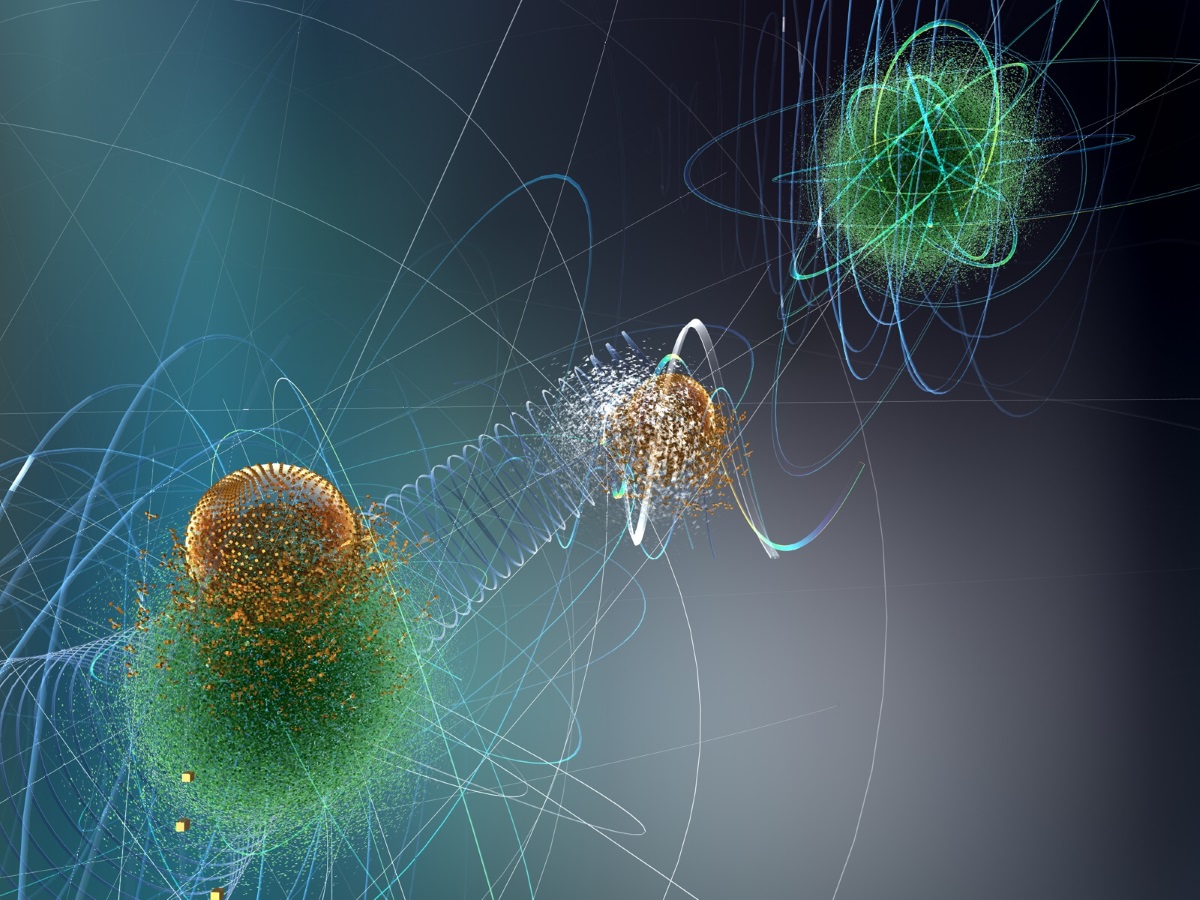Teleporting Toward a Quantum Internet

Quantum physics is a field that appears to give scientists superpowers. Those who understand the world of extremely small or cold particles can perform amazing feats with them—including teleportation—that appear to bend reality.
The science behind these feats is complicated, and until recently, didn’t exist outside of lab settings. But that’s changing: researchers have begun to implement quantum teleportation in real-world contexts. Being able to do so just might revolutionize modern phone and Internet communications, leading to highly secure, encrypted messaging.
A paper published in Nature Photonics and co-authored by engineers at NASA’s Jet Propulsion Laboratory, Pasadena, California, details the first experiments with quantum teleportation in a metropolitan fiber cable network. For the first time, the phenomenon has been witnessed over long distances in actual city infrastructure. In Canada, University of Calgary researchers teleported the quantum state of a photon more than 3.7 miles (6 kilometers) in “dark” (unused) cables under the city of Calgary. That’s a new record for the longest distance of quantum teleportation in an actual metropolitan network.
While longer distances had been recorded in the past, those were conducted in lab settings, where photons were fired through spools of cable to simulate the loss of signal caused by long distances. This latest series of experiments in Calgary tested quantum teleportation in actual infrastructure, representing a major step forward for the technology.

“Demonstrating quantum effects such as teleportation outside of a lab environment involves a whole new set of challenges. This experiment shows how these challenges can all be overcome and hence it marks an important milestone towards the future quantum Internet,” said Francesco Marsili, one of the JPL co-authors. “Quantum communication unlocks some of the unique properties of quantum mechanics to, for example, exchange information with ultimate security or link together quantum computers.”
Photon sensors for the experiment were developed by Marsili and Matt Shaw of JPL’s Microdevices Laboratory, along with colleagues at the National Institute of Standards and Technology, Boulder, Colorado. Their expertise was critical to the experiments: quantum networking is done with photons, and requires some of the most sensitive sensors in the world in order to know exactly what’s happening to the particle.
“The superconducting detector platform, which has been pioneered by JPL and NIST researchers, makes it possible to detect single photons at telecommunications wavelengths with nearly perfect efficiency and almost no noise. This was simply not possible with earlier detector types, and so experiments such as ours, using existing fiber-infrastructure, would have been close to impossible without JPL’s detectors,” said Daniel Oblak of the University of Calgary’s Institute for Quantum Science and Technology.
Safer emails using quantum physics

Shrink down to the level of a photon, and physics starts to play by bizarre rules. Scientists who understand those rules can “entangle” two particles so that their properties are linked. Entanglement is a mind-boggling concept in which particles with different characteristics, or states, can be bound together across space. That means whatever affects one particle’s state will affect the other, even if they’re located miles apart from one another.
This is where teleportation comes in. Imagine you have two entangled particles—let’s call them Photon 1 and Photon 2—and Photon 2 is sent to a distant location. There, it meets with Photon 3, and the two interact with each other. Photon 3’s state can be transferred to Photon 2, and automatically “teleported” to the entangled twin, Photon 1. This disembodied transfer happens despite the fact that Photons 1 and 3 never interact.
This property can be used to securely exchange secret messages. If two people share an entangled pair of photons, quantum information can be transmitted in a disembodied fashion, leaving an eavesdropper with nothing to intercept and so unable to read the secret message.
Teleportation Means Going the Distance

This system of highly secure communications is being tested in a number of fields, Marsili said, including financial industries and agencies like NASA that want to protect their space data signals. The superconducting single photon detectors developed by Marsili, Shaw and their NIST colleagues are a key tool in doing this, because sending photons over long distances will inevitably lead to “loss” of the signal. Even when using a laser in space, light diffuses over distance, weakening the power of the signal being transmitted.
The next step is building repeaters that can further teleport the state of a photon from one location to the next. Just as repeaters are used to carry other telecommunication signals across long distances, they could be used to teleport entangled photons. Super-sensitive photon detectors would allow repeaters to send entangled photons across the country. For space-related communications, repeaters wouldn’t even be necessary; photons could eventually be fired into space using lasers, and photon states could be teleported from Earth.
No repeaters were used in the Calgary experiments, which were mainly meant to establish how quantum teleportation can be performed outside the lab. Researchers used the city’s dark fiber—a single optical cable with no electronics or network equipment flowing through them.
“By using advanced superconducting detectors, we can use individual photons to efficiently communicate both classical and quantum information from space to the ground,” Shaw said. “We are planning to use more advanced versions of these detectors for demonstrations of optical communication from deep space and of quantum teleportation from the International Space Station.”




